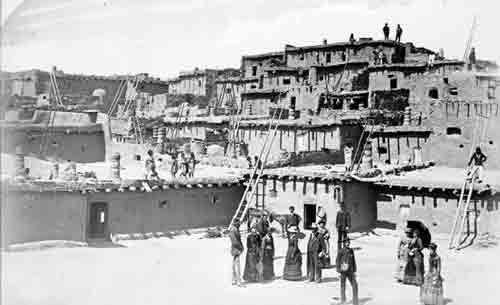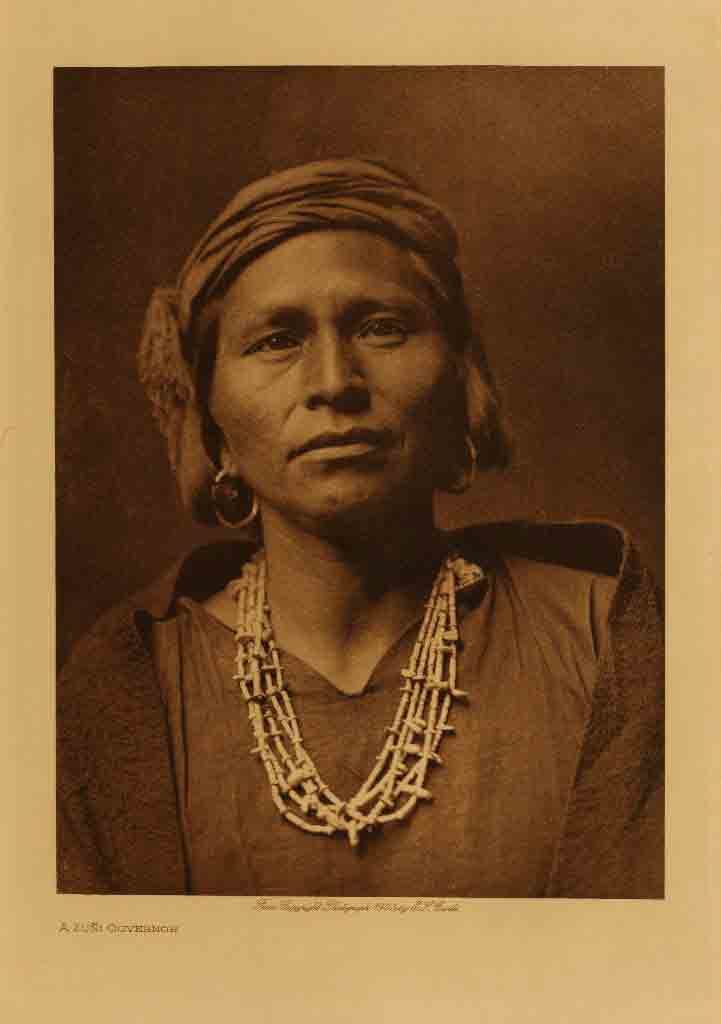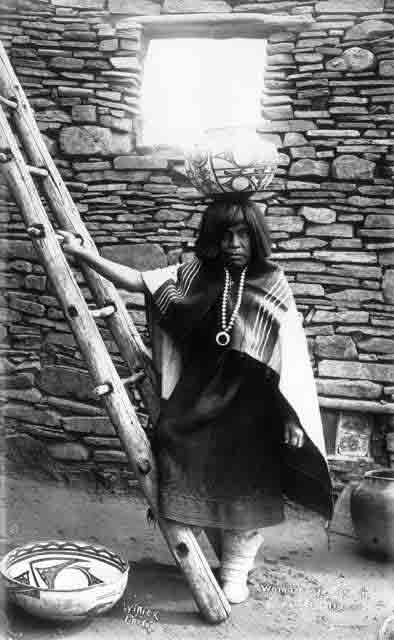The Zunis, now living mainly in western New Mexico, are another contemporary tribe with a historic link to the Grand Canyon. According to Zuni mythology, their place of origin was Chimik’yana’kya dey’a, known to modern hikers as Ribbon Falls on Bright Angel Creek, which flows to the Colorado River from the north rim wall of the Grand Canyon. Today, hikers descending the North Kaibab Trail often take a side hike to enjoy the cooling water of Ribbon Falls.
The Zunis lived in the Southwest in what is now the Zuni River Valley for thousands of years. Hundreds of years ago the Zunis, like the Hopis, began building pueblos, multi-storied homes fitted together that perhaps inspired modern-day condominiums. The Zuni farmed and hunted small game and became artisans of jewelry, pottery, fetish carving and painting. It is through that artwork that contemporary Zunis pay tribute to their culture and history.
Although the Zunis’ matrilineal clan system and annual ceremonial cycle of dances makes them seem closely related to other Southwest indigenous cultures, the Zuni language is not related to any others. Because of the importance of language to culture and spiritual traditions, the Zunis are working to retain and preserve that unique language.
Europeans first encountered the Zuni in 1539, when Fray Marcos de Niza led an expedition to their pueblo villages in what is now New Mexico. The Spaniards had heard rumors of wealth in the area, but it didn’t play out that way. Instead, a clash of cultures caused immediate violence. One of de Niza’s men, Estevan, demanded women and turquoise from the Zuni, who responded by killing him. Marcos fled to Mexico, spreading tales of the gold-filled “Seven Cities of Cibola.”
A year later, Francisco Vásquez de Coronado led an expedition back to the Zuni villages, but found no gold. Coronado sent out scouting parties in search of riches. García López de Cárdenas led one of those parties. He also did not find gold, but he and his men were the first Europeans to view the Grand Canyon.
The Zunis, along with other Pueblo peoples in the Southwest, revolted against Spanish priests in 1680 and continued to resist religion influence.
Under the Indian Reorganization Act of 1934, the Zunis decided to hold elections for tribal officials. They began decades of work toward reclaiming land they had lost over the past half century.
In 1978, Congres returned Zuni Salt Lake to the tribe. The lake, about 60 miles south of Zuni Pueblo, is the home of Ma’lokkyattsik’I, or Salt Mother. It is a shallow lake that often dries to a salt bed, and has been important for indigenous peoples for centuries. In 2003, the Zunis won an important environmental battle to save Zuni Salt Lake when Salt River Project abandoned plans to open a huge coal strip mine in the area. Zunis feared that water pumping for the mine would deplete the aquifer under the lake.
Today, about 12,000 Zunis live mainly at Zuni Pueblo, a 420,000-acre reservation south of Gallup on the Arizona-New Mexico line. They also own land in Apache County, Arizona, and Catron County, New Mexico. Respectful tourists are welcome to visit.
Visitors to the A:shiwi A:wan Museum can see painted murals of the Zunis’ migration story, a time when their ancestors emerged from the fourth underworld and journeyed to the middle place.
See the Pueblo of Zuni for more information on the tribe, or Zuni Tourism for information on proper etiquette while visiting.
Written By Patricia Biggs
References:
- Zuni Tribe Web site
- Hughes, J. Donald. In the House of Stone and Light: A Human History of the Grand Canyon, Grand Canyon Natural History Association, 1978




